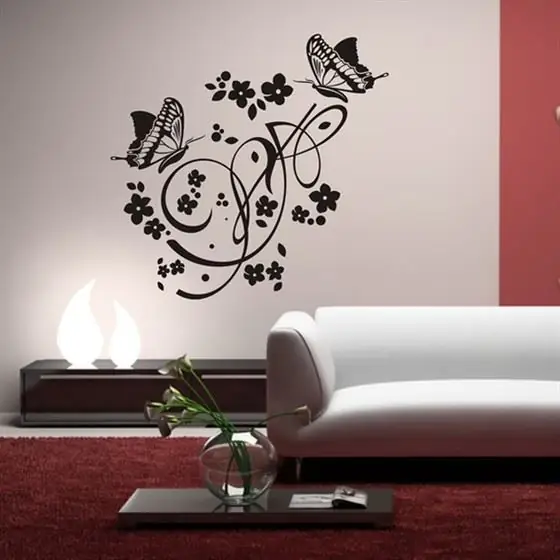Interior painting is a unique opportunity to make your home more beautiful and original. Many people are not satisfied with the ready-made wallpaper designs that can be bought in the store, they want to decorate the walls with beautiful hand-made ornaments or paintings to make their home look unique. Even a person who does not have an art education can paint the walls, if desired.

Instructions
Step 1
There are different techniques for interior painting. Sometimes, when the artist is faced with the task of painting a complex and large picture, a primed canvas for painting is glued to the wall, but most often the walls are painted over the finishing plaster, on which the strengthening primer is applied.
Step 2
To get started, be sure to prepare the wall surface for painting - clean the wall from old paint, dust, dirt and crumbling plaster, and then level the wall surface, cover it with a new layer of plaster, and then carry out the final leveling with putty or artistic plaster.
Step 3
It is already possible to paint on artistic plaster. You can also stick plain wallpaper for painting on the aligned wall. Cover the wall surface with a thin layer of acrylic primer for the best adhesion of the paint to the wall.
Step 4
Think carefully about the idea of / u200b / u200bdesigning the wall and develop sketches for the drawing. If you've never painted before, a stencil is the best wall decoration method for you. You can make it yourself, or you can purchase a ready-made stencil with the desired pattern in interior stores.
Step 5
You will also need paint in the correct shades, stencil glue, a foam sponge, and paper to cover the floor. Cover the floor with paper or plastic, and then spray the back of the stencil with spray glue.
Step 6
Secure the stencil to the wall by pressing firmly against it with a piece of paper, then mix on a paint palette to get the color you want to paint the pattern with. Now take a palette with mixed shades, put the minimum amount of paint on the sponge and begin to gently rub the paint into the stencil.
Step 7
For a decorative effect, you can paint the lower part of the pattern with paint in a different shade, and then create a smooth transition between the colors. Use as little paint as possible on the stencil. Move the stencil gradually along the wall until it is painted around the entire perimeter. Separate the stencil from the wall gently when you are sure the paint is dry.






